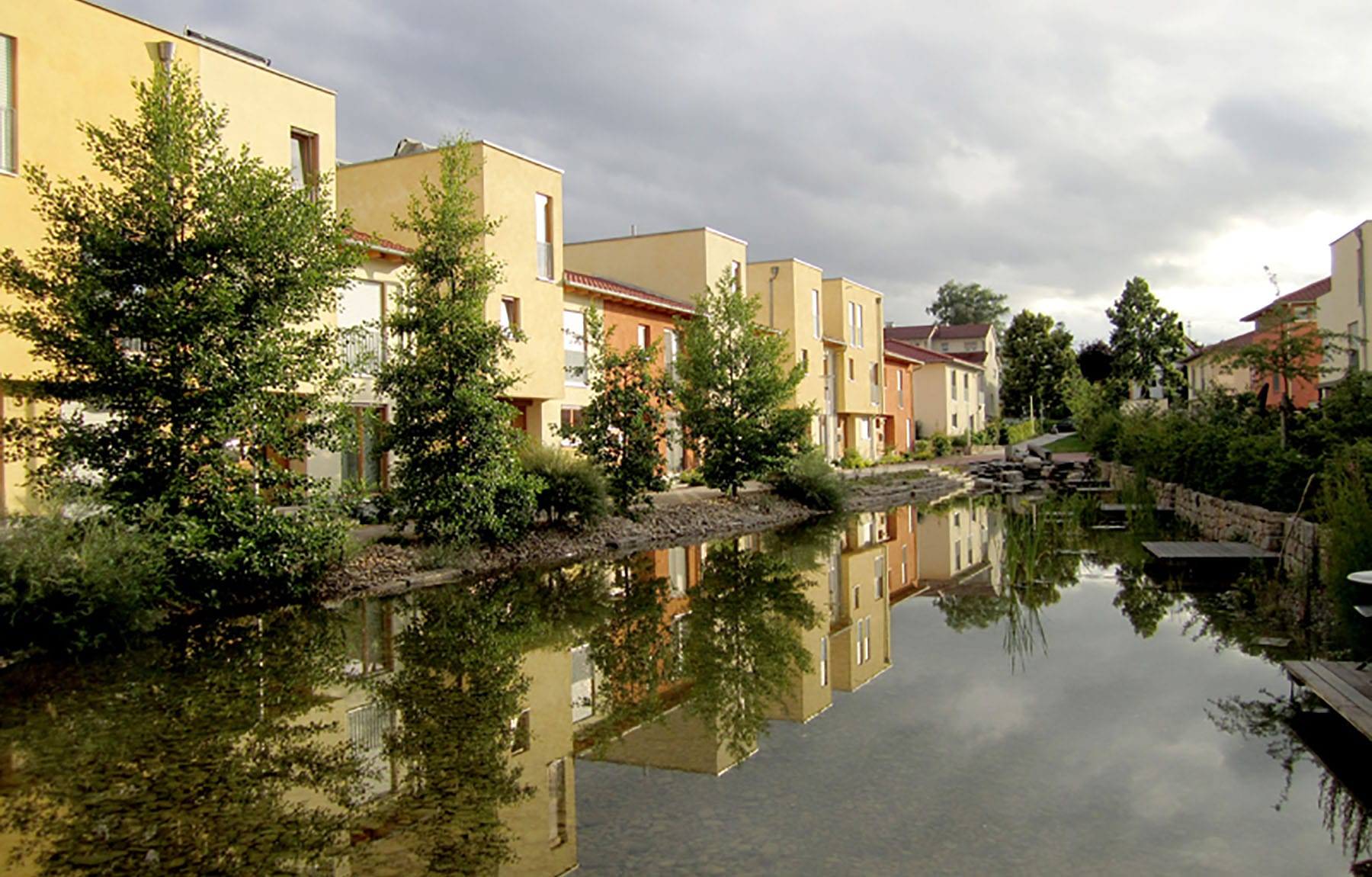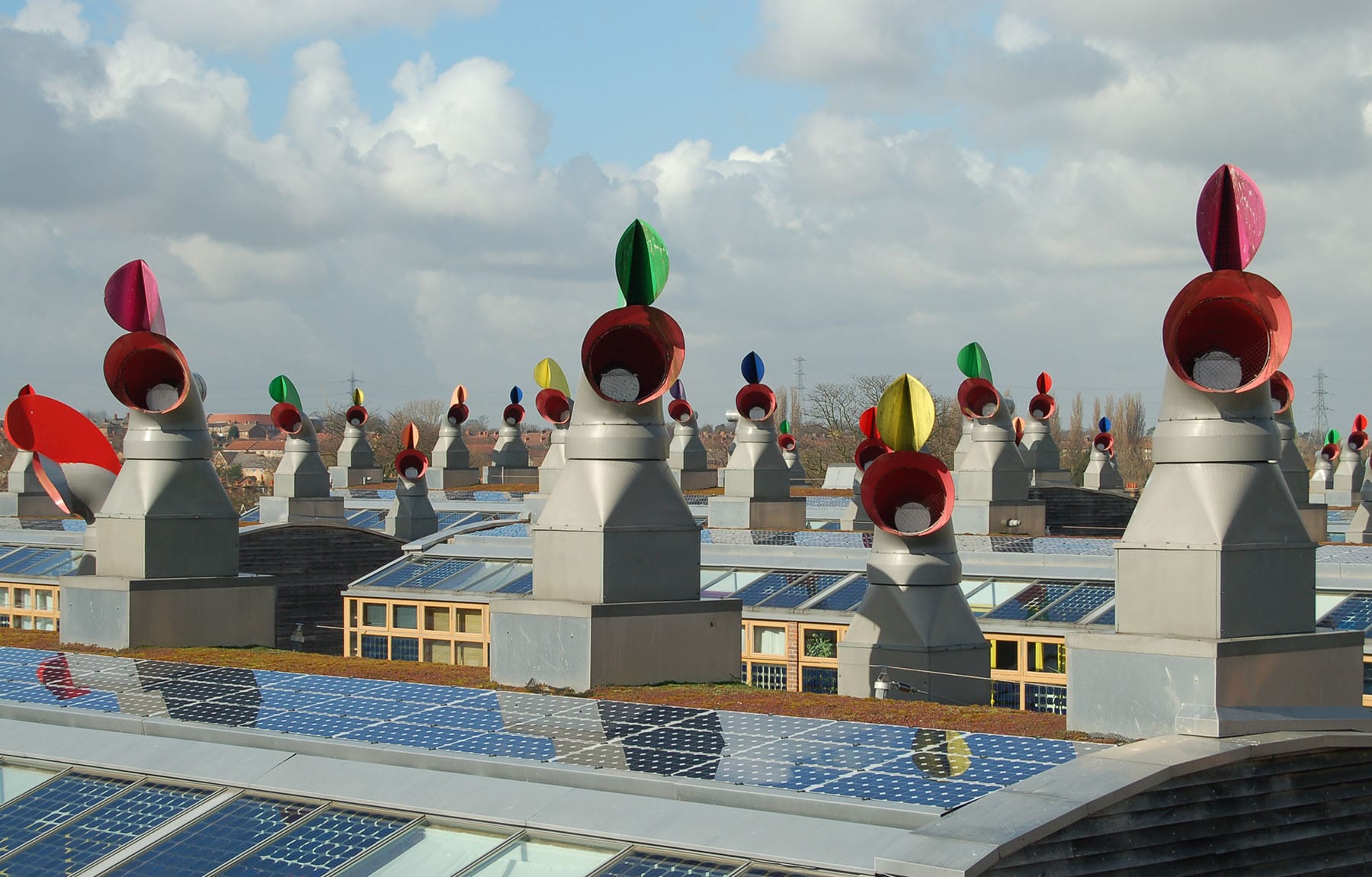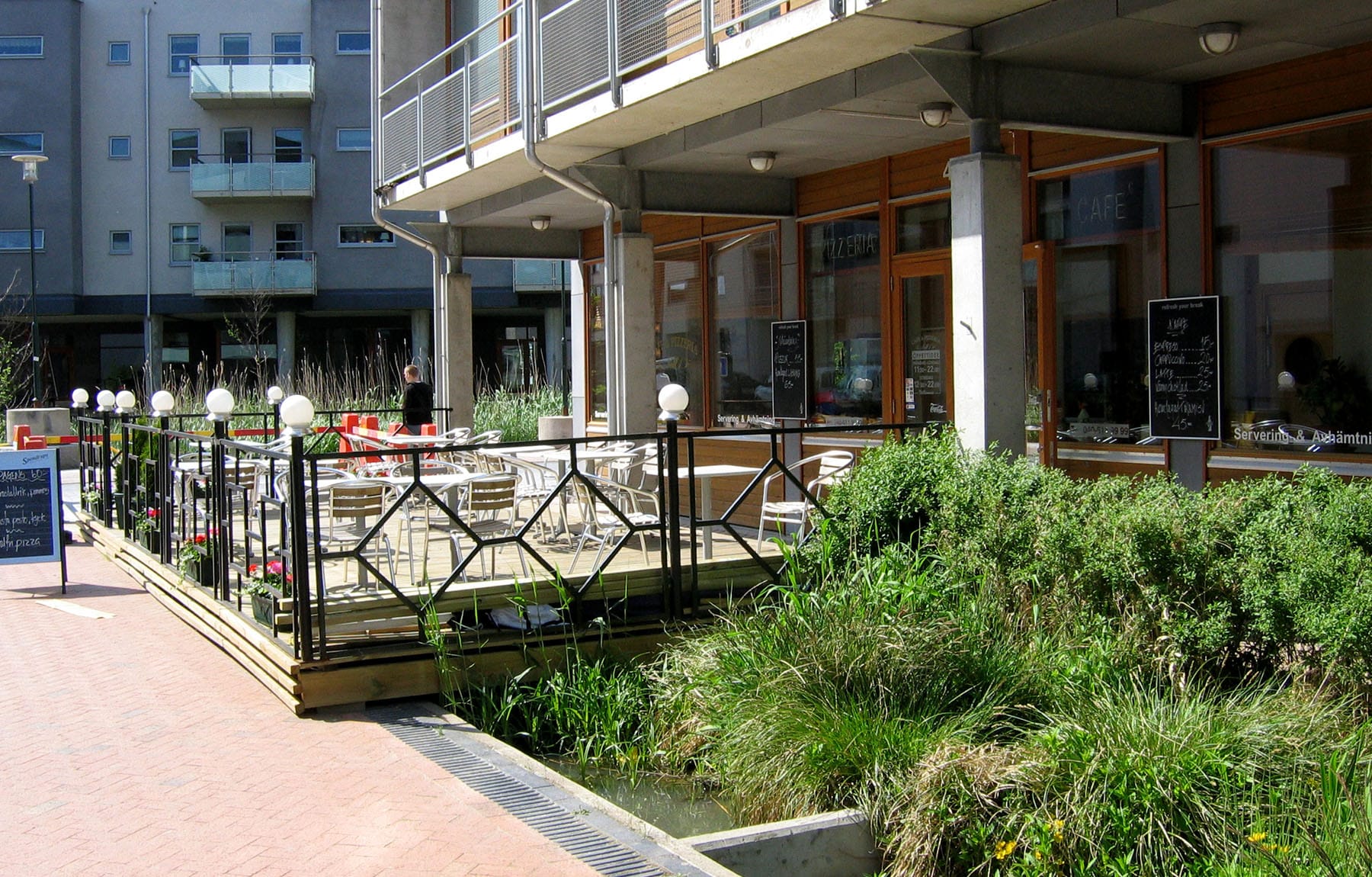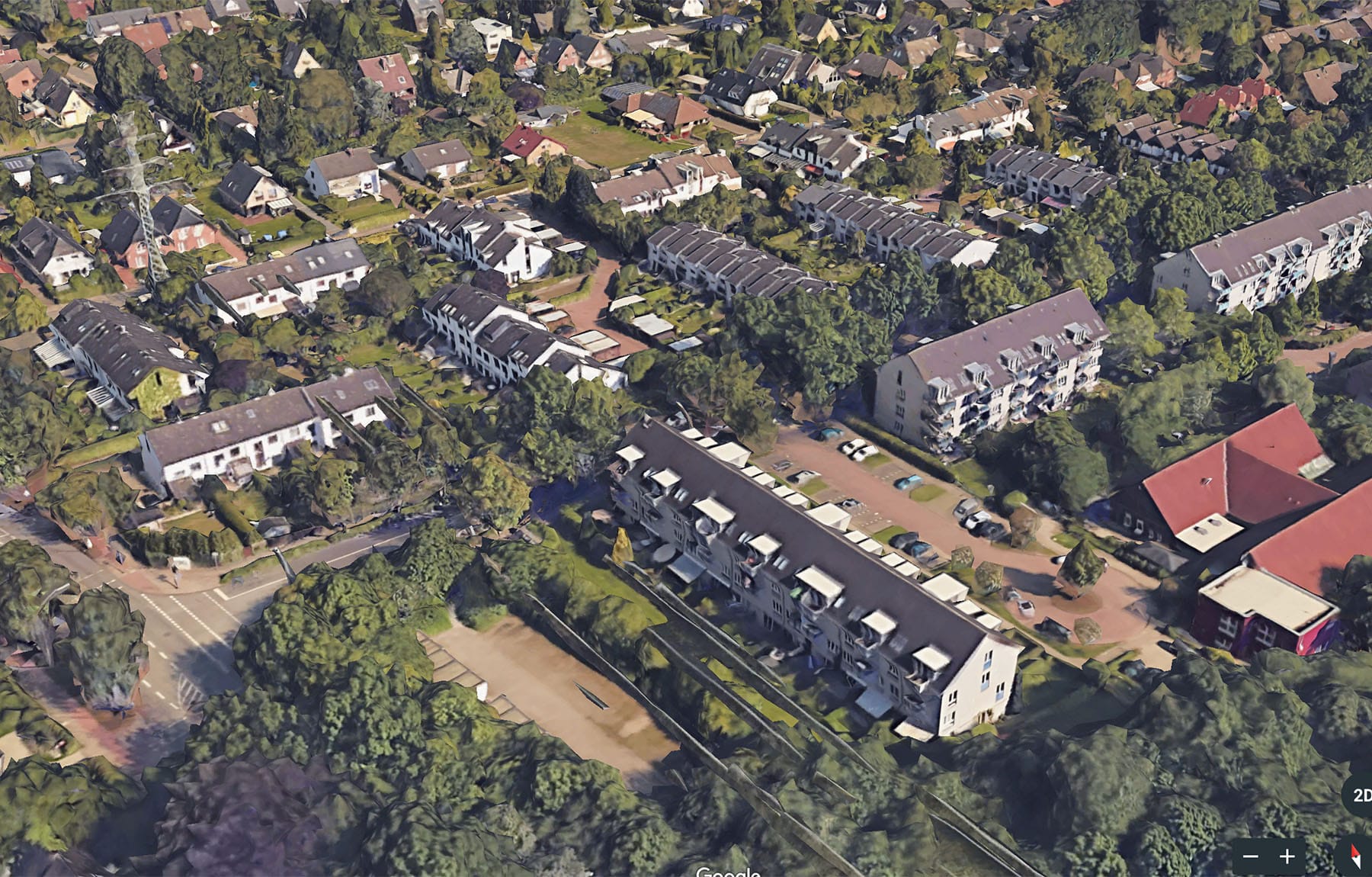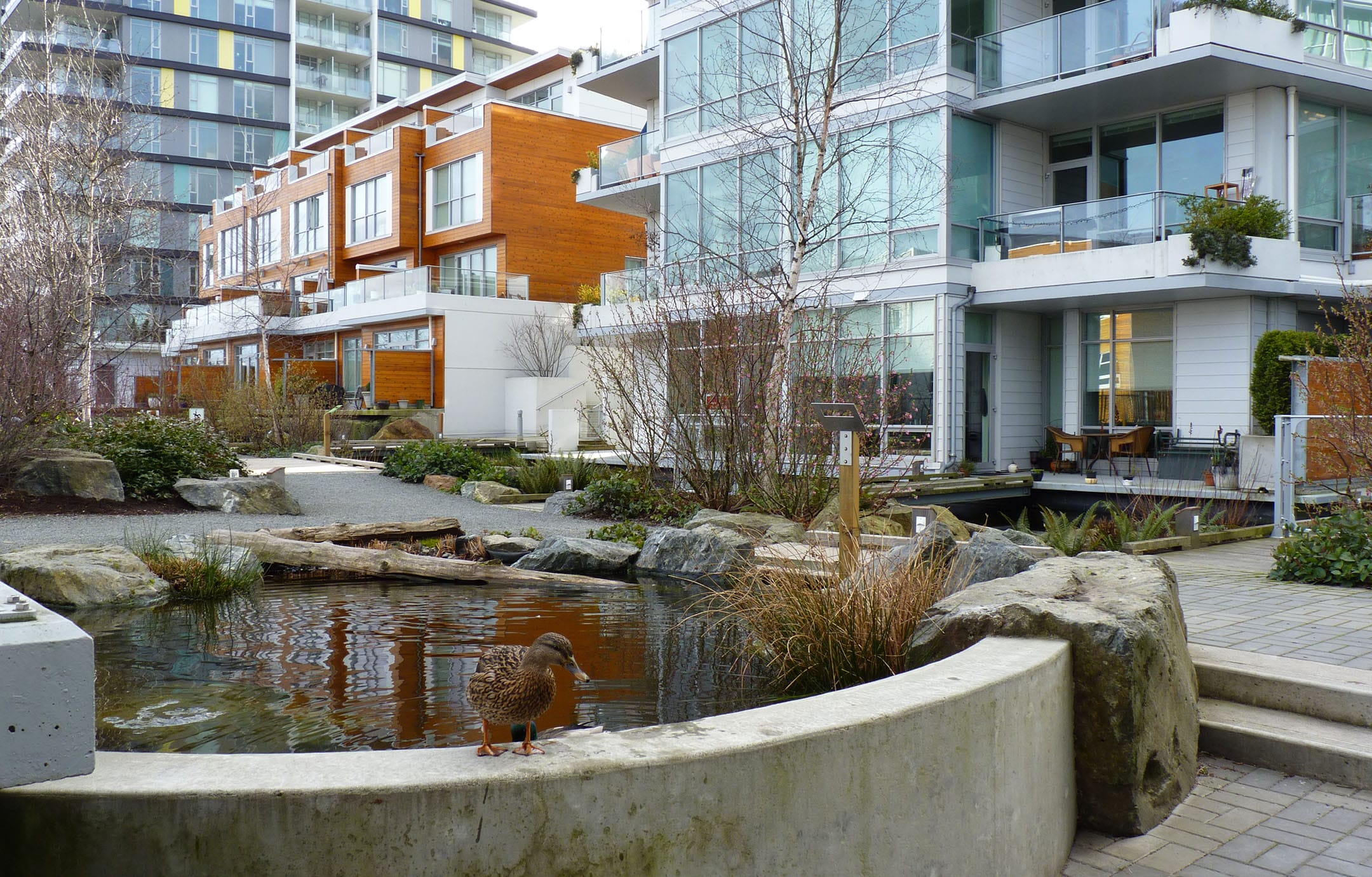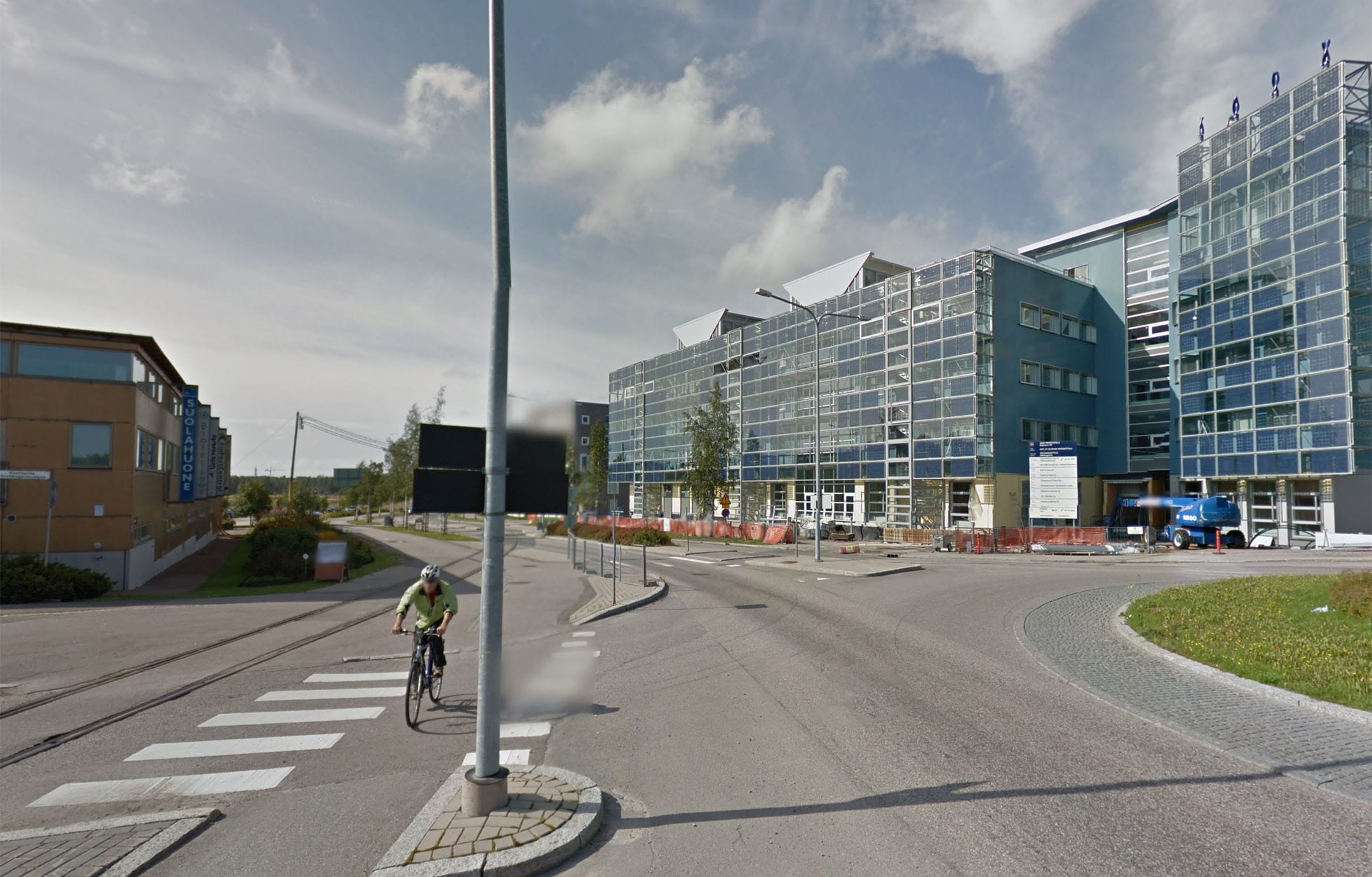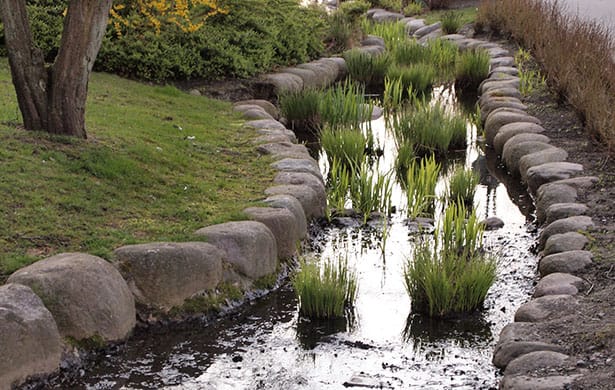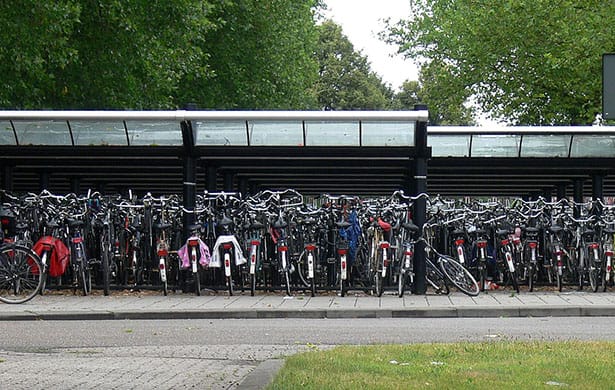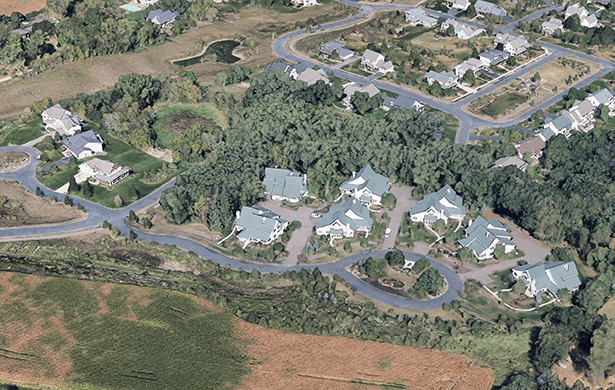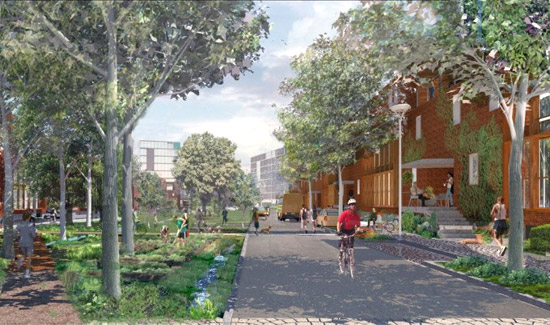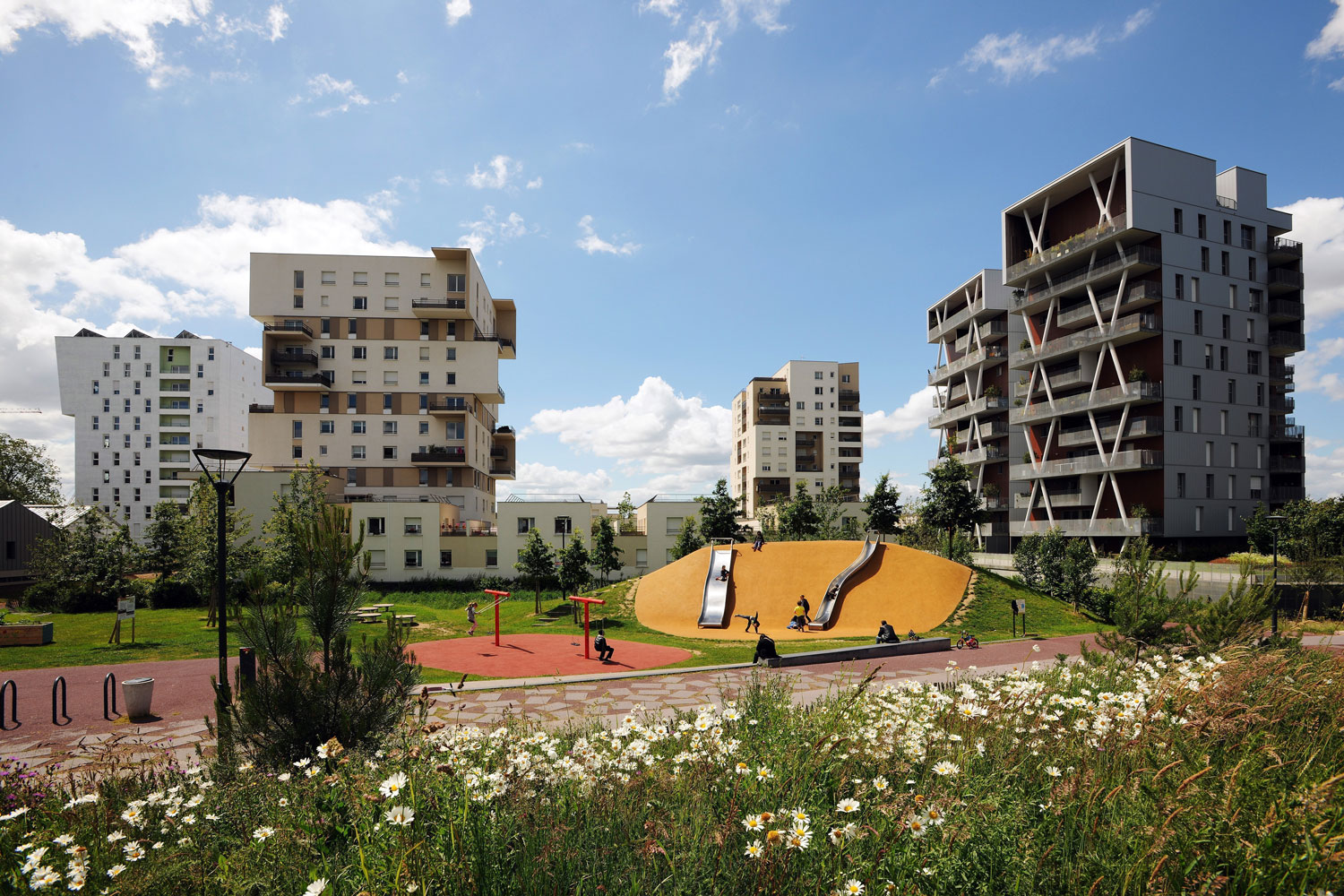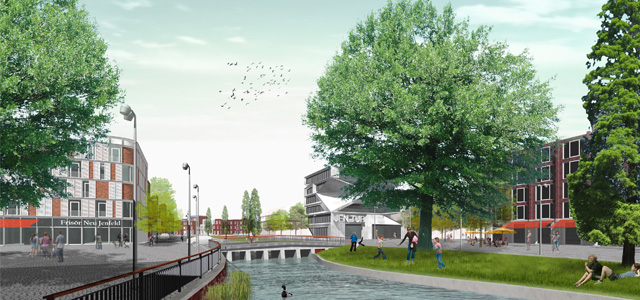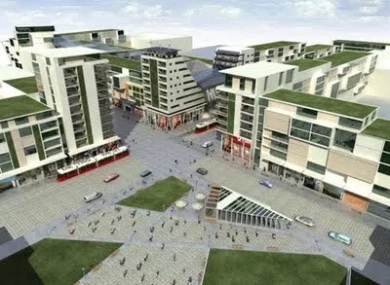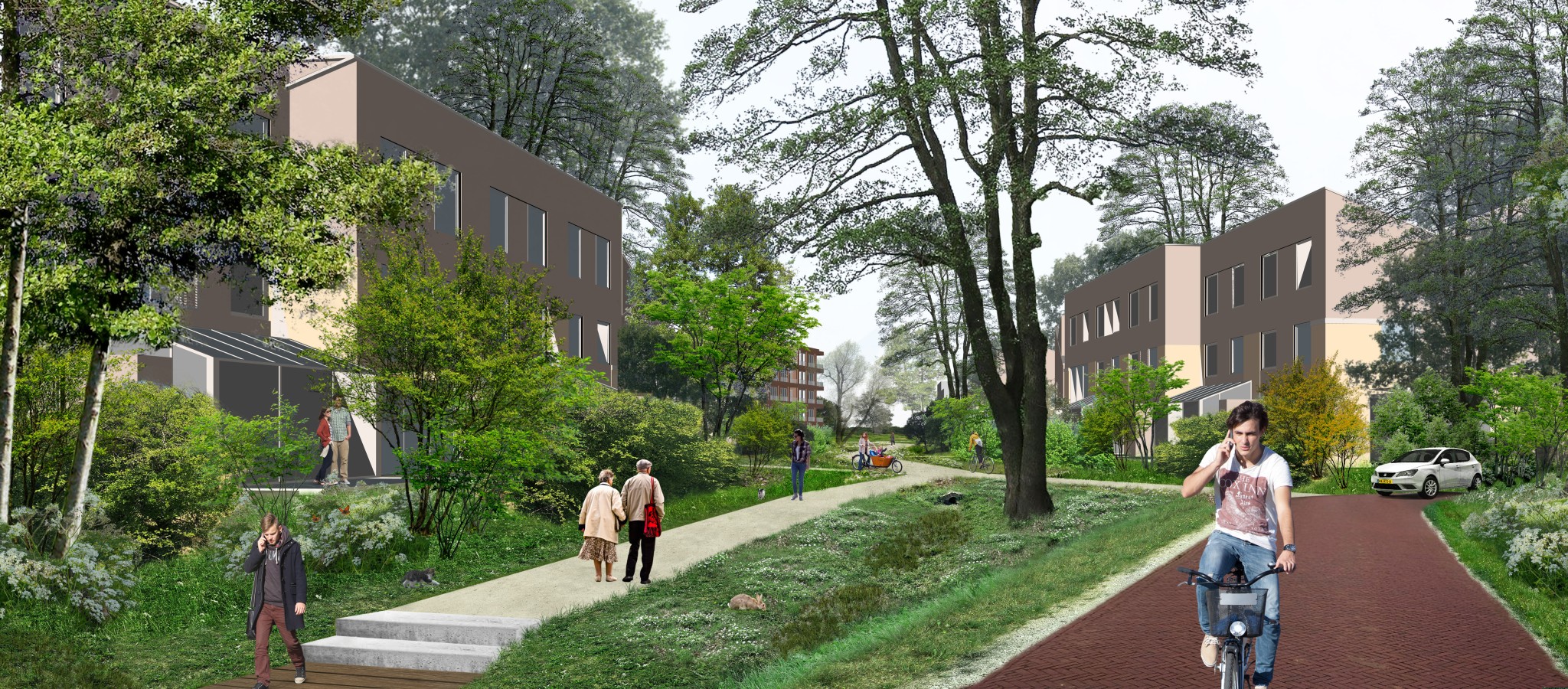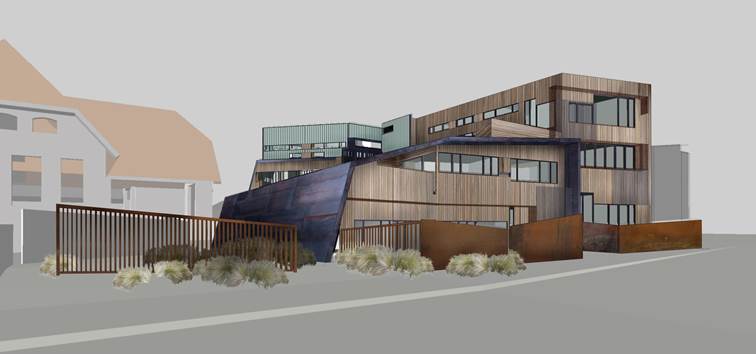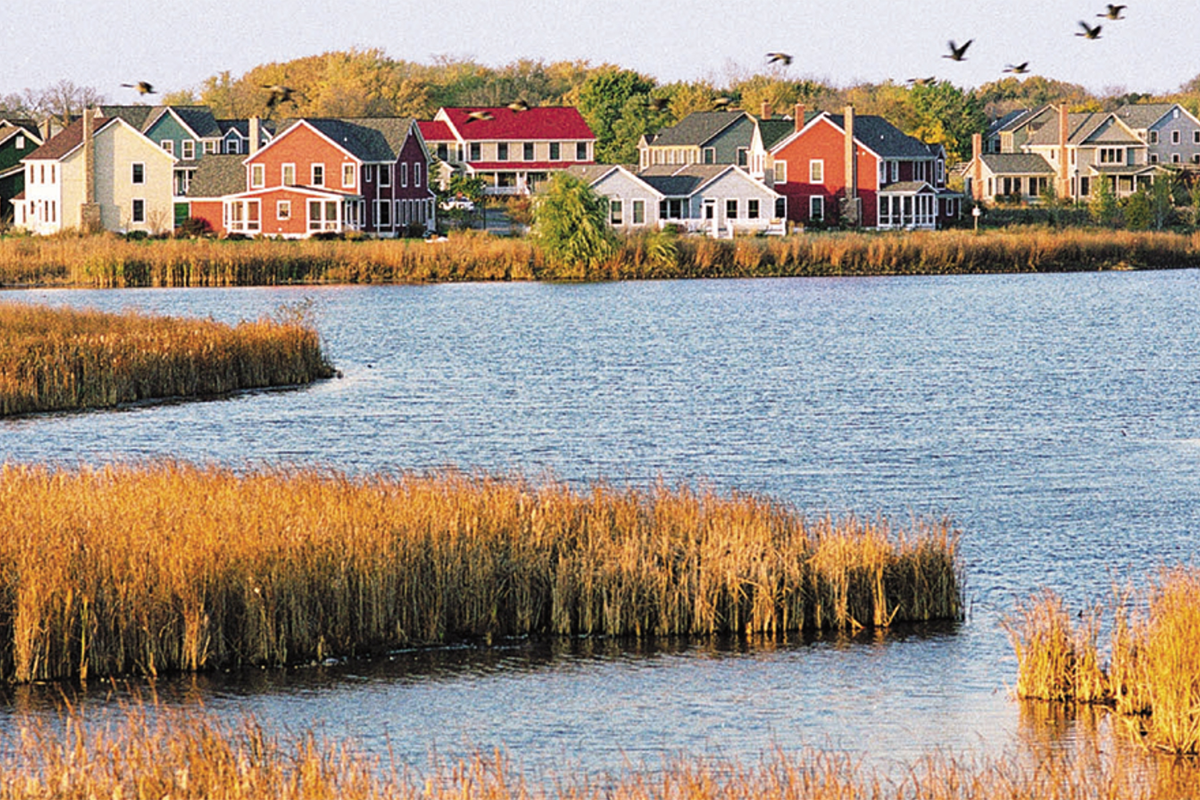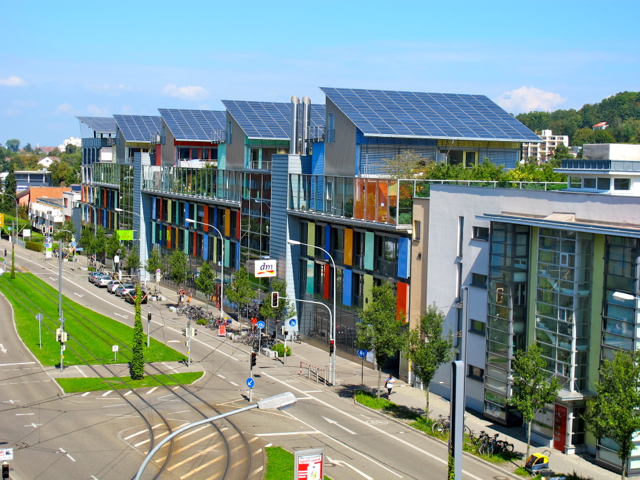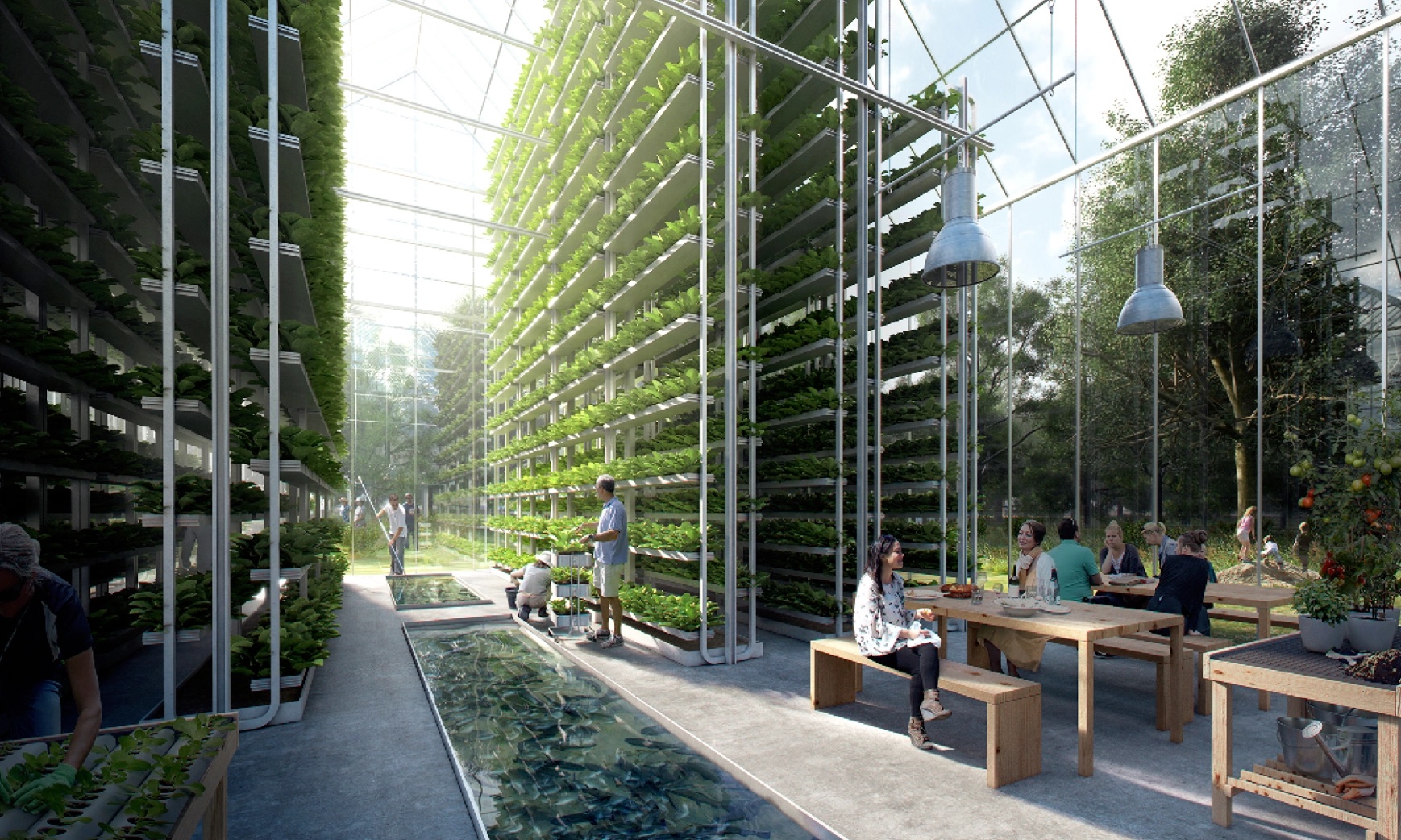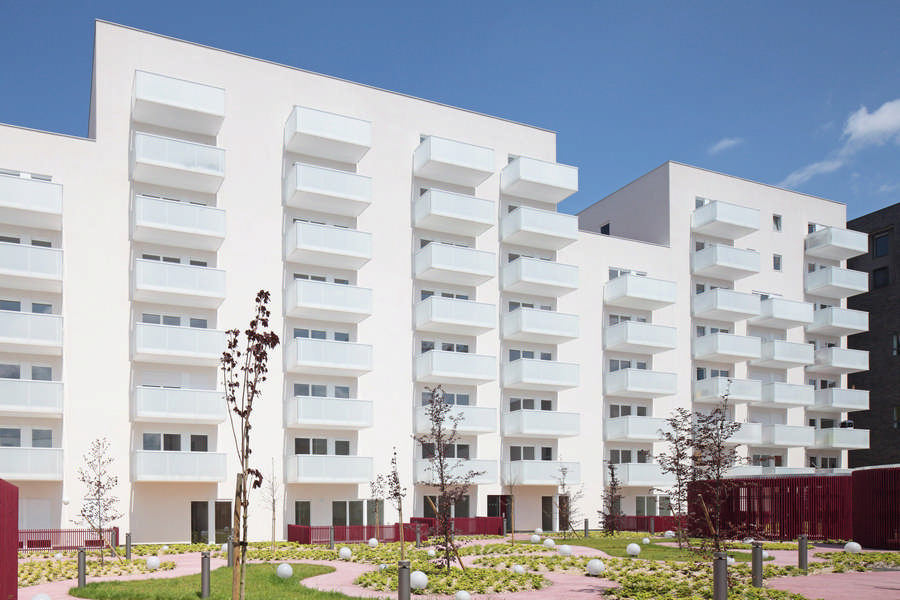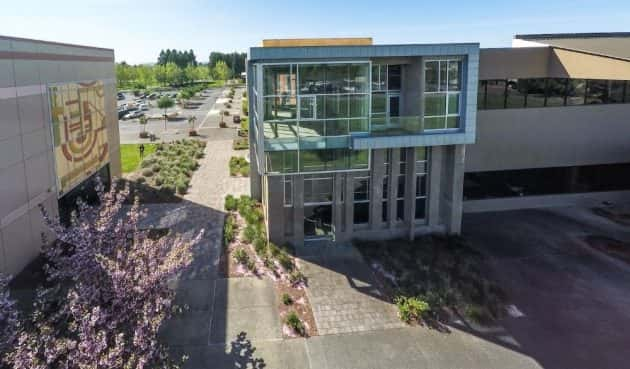Scarcity of potable water is quickly becoming a serious issue as many countries around the world face severe shortages and compromised water quality. Even regions that have avoided these problems are at risk from climate change, highly unsustainable water-use patterns, and the continued drawdown of major aquifers.
The goal of this category is a future wherein all developments are configured based on the carrying capacity of the site. The capacity is determined by the ability to harvest sufficient water to meet the needs of a given population while respecting the natural hydrology of the land, the water needs of the ecosystem the site inhabits, and those of its neighbors.
Based on the Water Petal of the Living Buildings Challenge.
Water Assessment Factors:
Water
The Water Assessment Factor encourages evaluation of stormwater management, natural water flows and water use patterns during development.
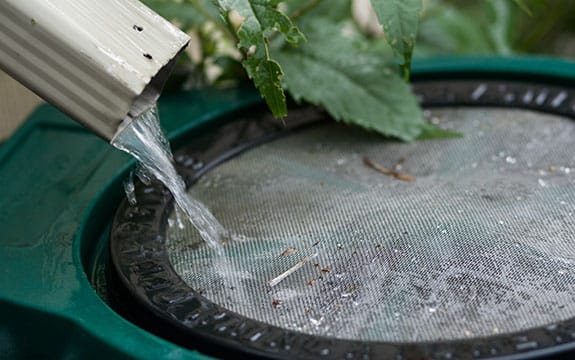
ASSESSMENT CRITERIA:
| Standard | Good | Better | Living Community Principles | Regenerative |
|---|---|---|---|---|
| Water needs met by utilities or well, some conservation strategies in place. | Some stormwater reuse or infiltration, greywater recycling, conservation goals. | Greywater purification and reuse, rainwater capture and use, stormwater prevention through green roofs and permeable surfaces. | Net-Positive Water 100% of community's water needs met by captured precipitation or closed-loop water system. 100% of community's water discharge (including greywater and blackwater) treated on site. Restores the water cycle.2 | All water is sourced from natural precipitation (with on-site storage for periods of drought) and returned to regional surface or groundwater cycles after usage. Compromised waters from off site are cleaned or treated on site. |
2 Derived from the Living Community Challenge Imperatives

